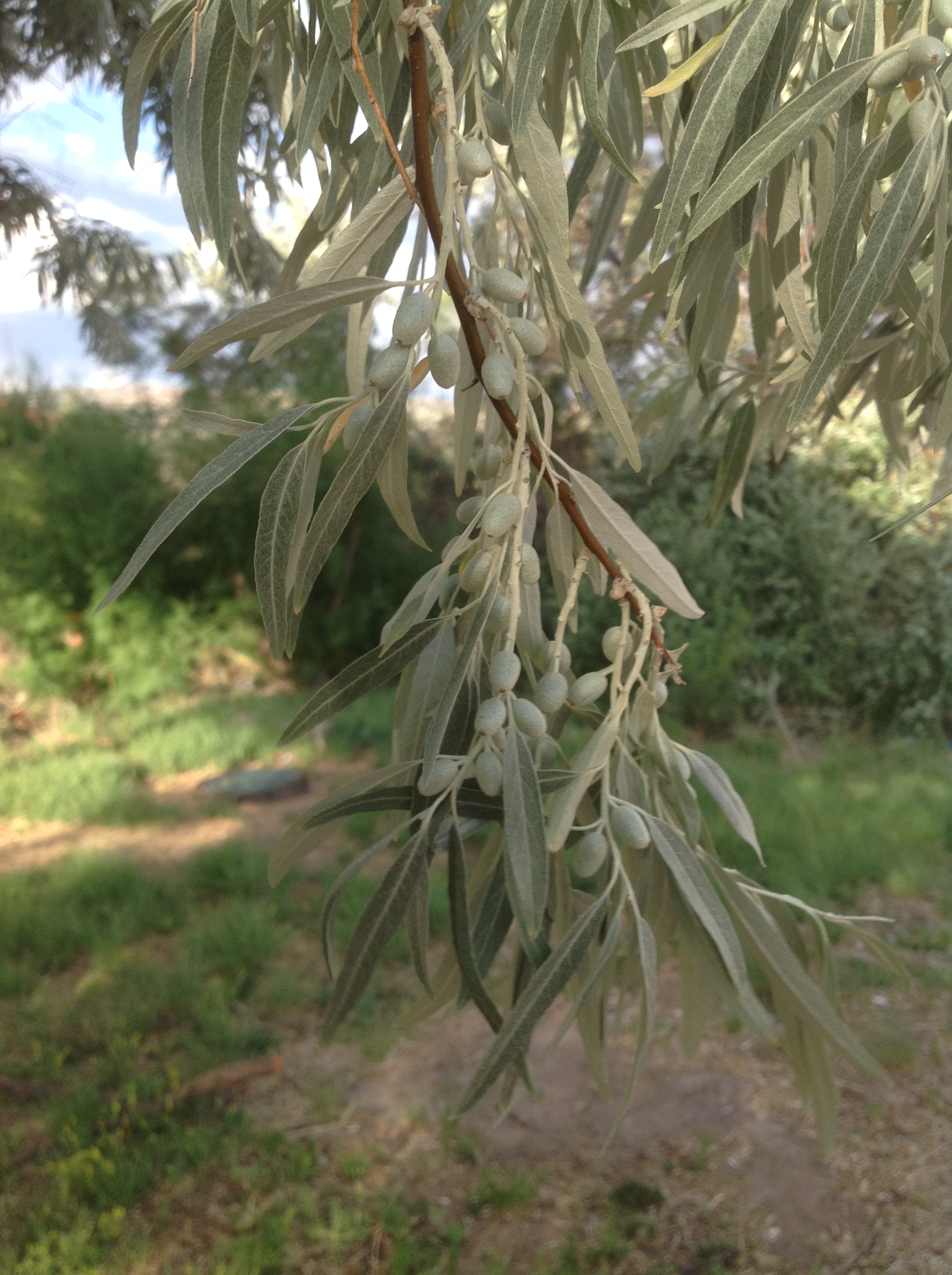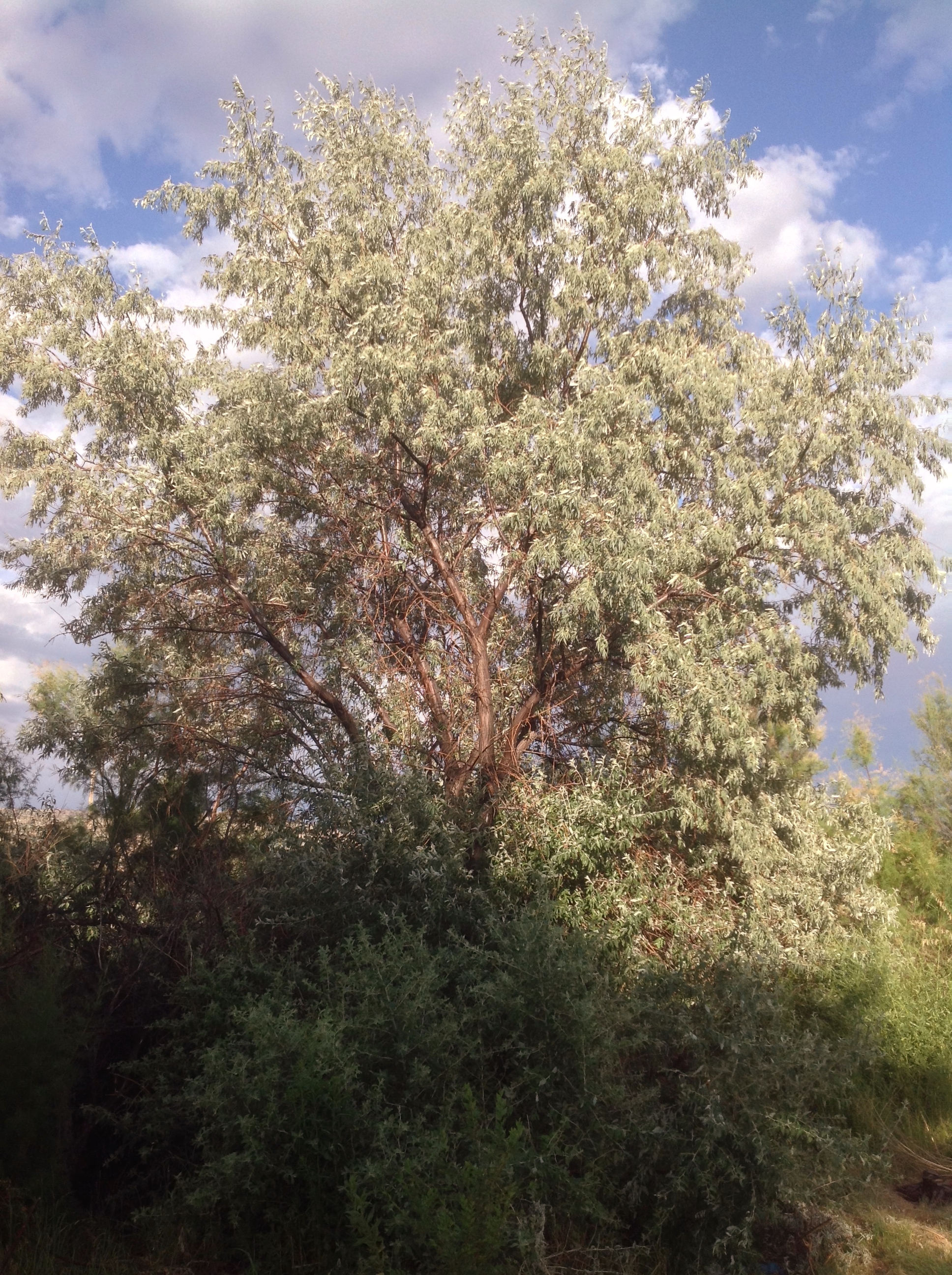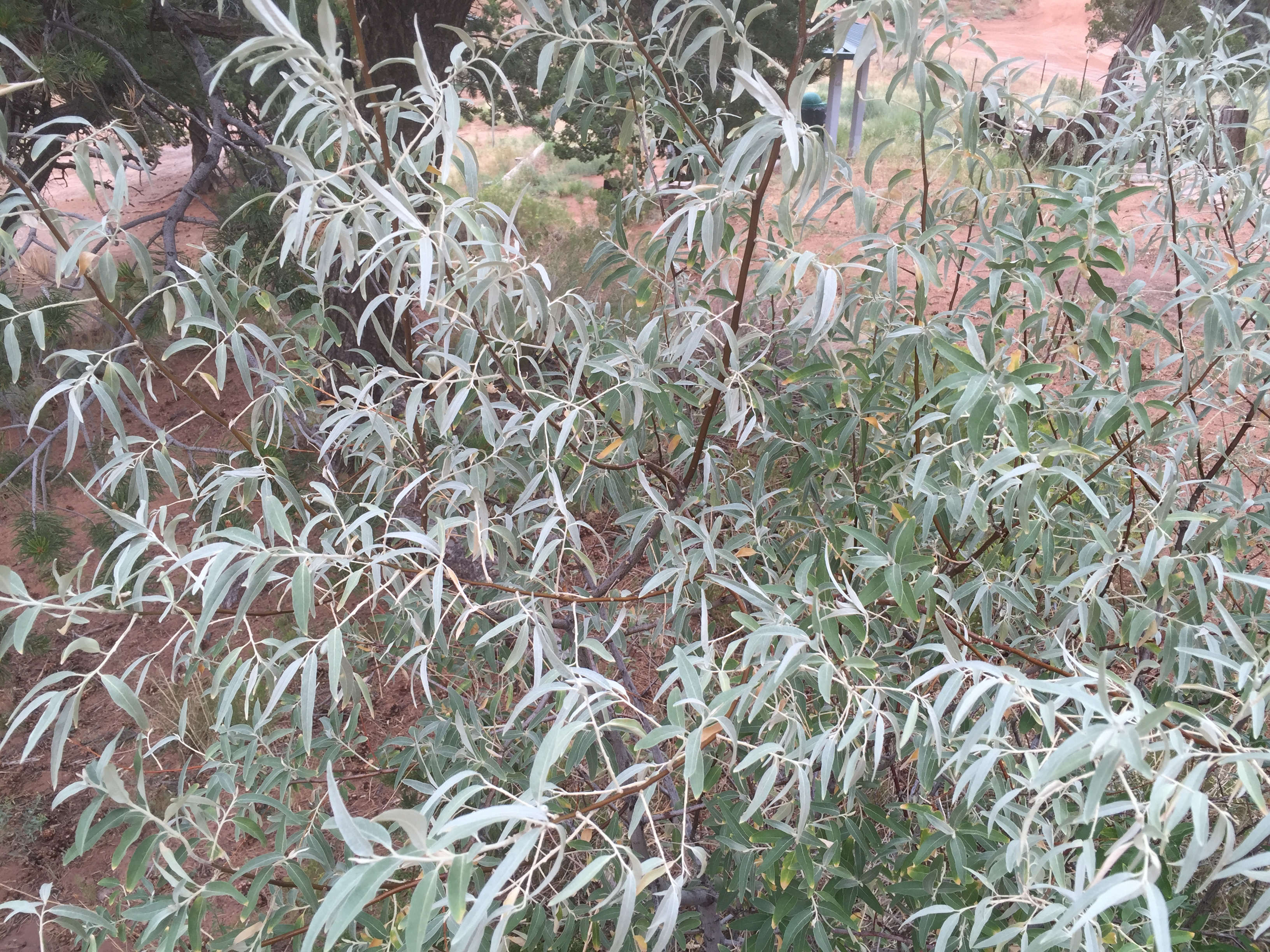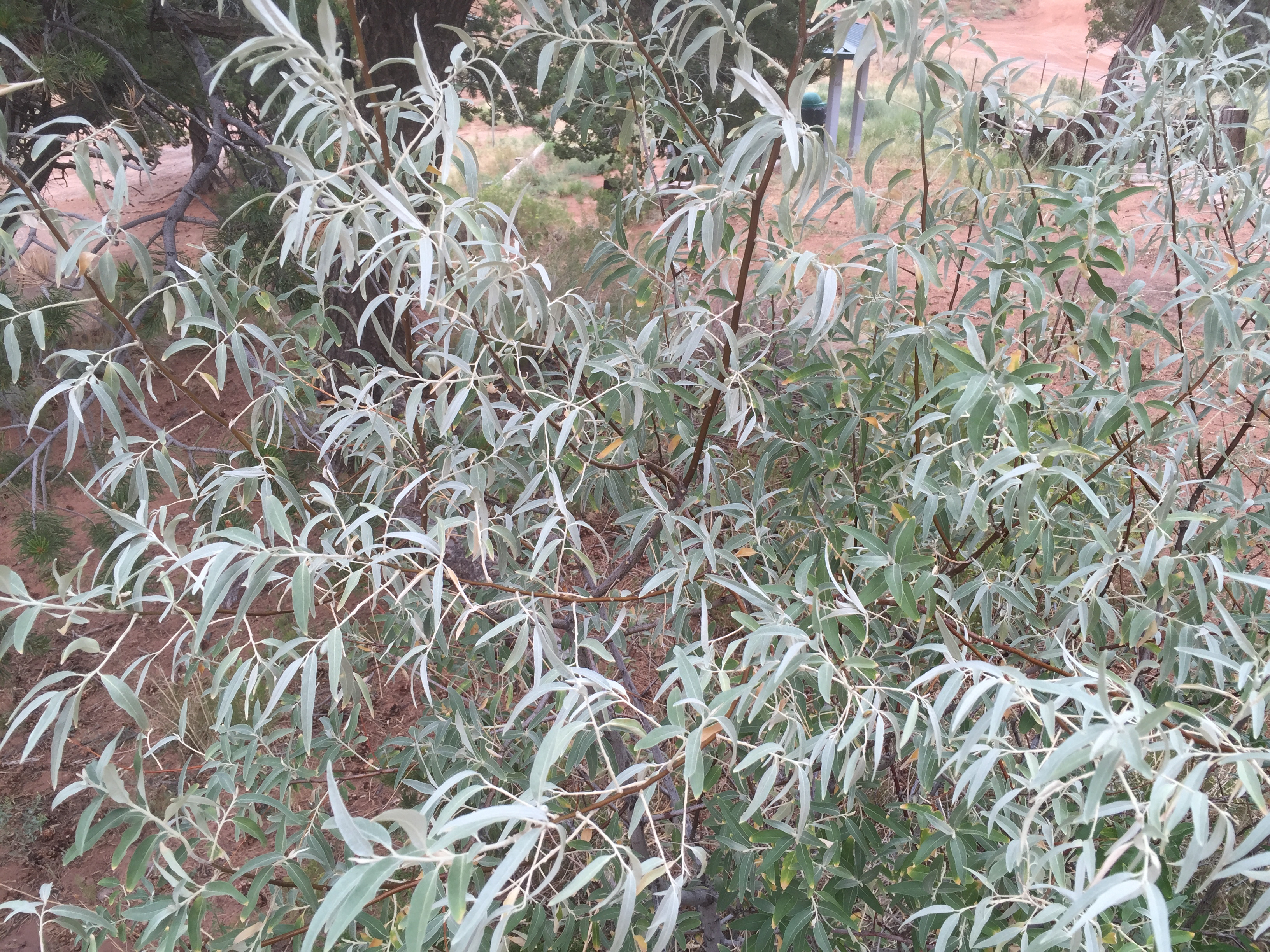Selected Plants of Navajo Rangelands
Russian olive
Tsin łibáhá
(a.k.a. silverberry, oleaster, wild olive, Persian olive)

Russian olive is a shrub or small tree, usually 12 to 45 feet tall. It can grow up to six feet per year. It forms a dense, rounded crown. Near the ground, its branches spread from 10 to 20 feet. Unpruned trees have five or six main stems starting near the ground. The twigs are flexible, coated with a gray, scaly pubescence, and have a thorn at the end. Bark is reddish-brown and thin, with shallow fissures. It exfoliates into long strips.
Russian olive is commonly found growing along floodplains, riverbanks, stream courses, marshes, and irrigation ditches at elevations from 4,500 to 6,000 feet. It is tolerant of considerable amounts of salinity or alkalinity, and can survive considerable droughts. In addition to reproducing from seed, it sprouts from the root crown and sends up suckers. It thrives under a wide range of soil textures, from sand to heavy clay, and withstands flooding and silting. It grows best in deep sandy or loamy soils with only slight salt and alkali content.
Russian olive has no forage value for livestock or big game, although both browse the foliage at times. In general, Russian olive-dominated communities provide inferior wildlife habitat to that of native riparian vegetation. Russian olive rapidly colonizes lowland fields, often chokes irrigation ditches, and damages tires and equipment. Once established, Russian olive is difficult to control and nearly impossible to eradicate. The most effective combination of control efforts is cutting trees, followed by either spraying or burning the stumps..



Copyright 2018 New Mexico State University. Individual photographers retain all rights to their images. Partially funded by the Western Sustainable Agriculture Research and Education Program (westernsare.org; 435.797.2257), project EW15-023. Programs and projects supported by Western SARE are equally open to all people. NMSU is an equal opportunity/affirmative action educator and employer.
NMSU does not discriminate on the basis of age, ancestry, color, disability, gender identity, genetic information, national origin, race, religion, retaliation, serious medical condition, sex (including pregnancy), sexual orientation, spousal affiliation or protected veteran status in its programs and activities as required by equal opportunity/affirmative action regulations and laws and university policy and rules. For more information please read the NMSU Notice of Non-discrimination.

